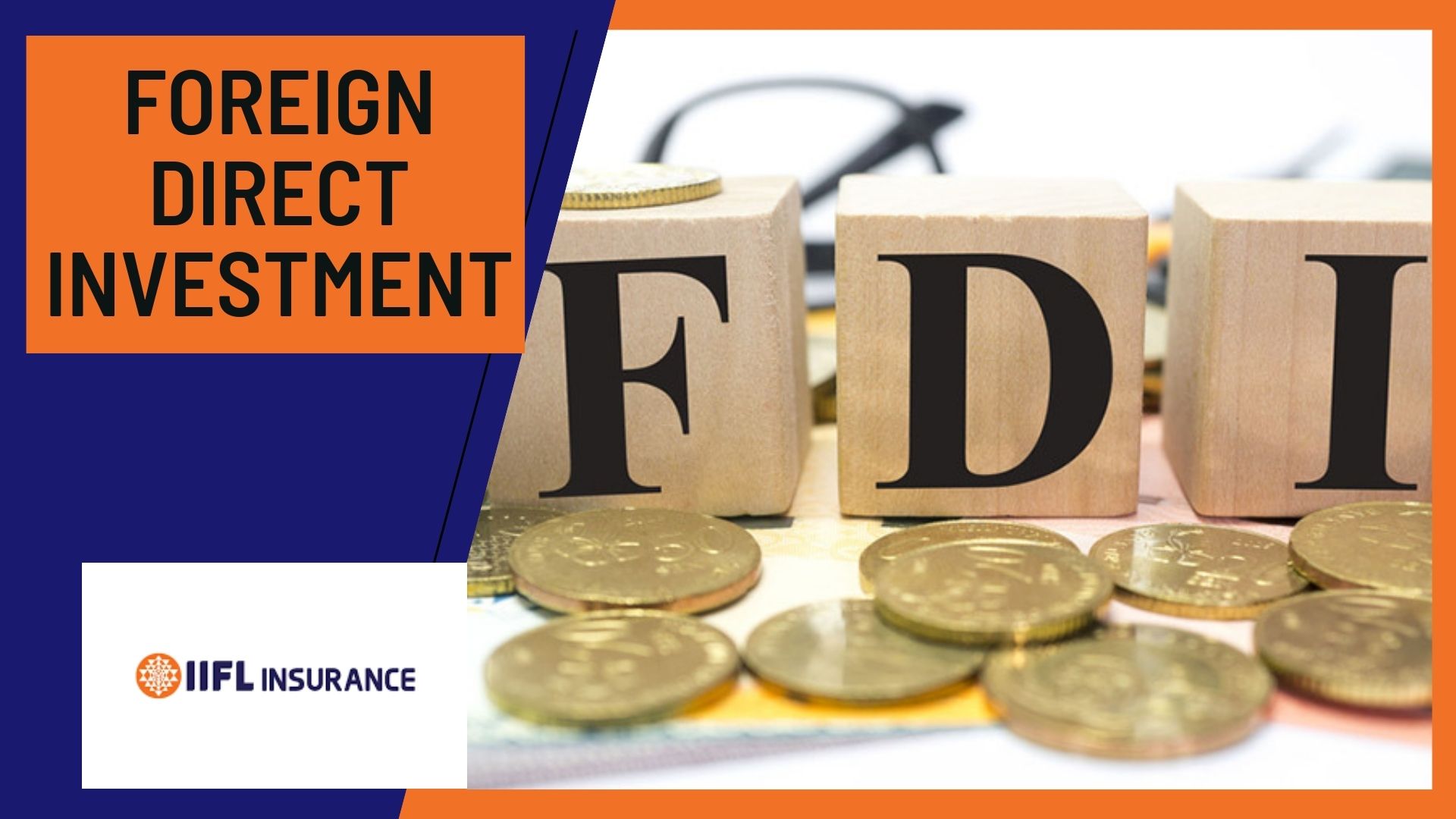FDI Limit in Insurance Sector
Understanding FDI and FDI Limit in Insurance Sector
FDI is also known as Foreign Direct Investment. It can be explained as the purchase of an interest in a company done by a company or an investor that is located outside the borders of the first company.
Usually, the term Foreign Direct Investment or FDI is used to describe a business decision that was made to acquire a substantial stake in a foreign business. It can also mean buying a company outright for expanding the operations of the foreign company in a new region. This is why one must remember that the term Foreign Direct Investment is not used commonly to describe a stock investment in a foreign company.

You might also find it interesting to note that as of 2020, the United States of America is second to China in attracting Foreign Direct Investment (FDI). If you are intrigued by this topic, then you should stick around as we will cover everything that you need to know about FDIs in this article today.
How Does Foreign Direct Investment (FDI) Work?
It is true that an FDI limit in the insurance sector is imposed. However, before we start talking about the FDI limit in the insurance sector, it is important to understand how FDIs work. It all starts when companies consider a foreign direct investment.
This is generally done by looking at companies in open economies. These economies should also offer a skilled workforce and more than average growth prospects for the investor. It is also a plus in this scenario if there are light government regulations in those open economies.
It should be noted that foreign direct investments usually go beyond capital investment. This can include the provision of management, equipment, and technology. Further, a defining feature of foreign direct investment is that it helps in establishing effective control of foreign business. At the very least, there is a substantial influence over the decision-making capacity of the foreign business in those cases.
A lot of headlines related to the FDI limit in the insurance sector became very popular in 2020. This was due to the fact that foreign direct investment tanked all across the globe due to the COVID-19 pandemic. The total $859 billion global investment of 2020 was compared with the $1.5 trillion investment in 2019. This statistic is according to the United Nations Conference on Trade and Development.
Apart from that, China also dislodged the United States of America in 2020 as the top draw for the total investment. China attracted $1163 billion compared to the investment in the United States of America which was worth $134 billion.
Special Considerations in FDI Limit in Insurance Sector
Now you must have a basic idea of what a foreign direct investment is. The next step from here is to understand any special considerations in foreign direct investments. This will bring you a step closer to your goal of understanding what the FDI limit in the insurance sector means.
Foreign direct investment can be made in a number of different ways, including:
- Opening a subsidiary in a foreign country
- Opening an associate company in a foreign country
- Acquiring a controlling interest in an existing foreign country
- Through a merger with a foreign company
- Joint venture with a foreign company
Further, there is also a threshold for foreign direct investment for establishing a controlling interest. According to the guidelines established by the Organization of Economic Co-Operation and Development (OECD), this value is 10% of the ownership stake in the foreign country. One should remember that this is not a strict definition. This value is quite flexible.
The Types of Foreign Direct Investment
There are mainly three different types of foreign direct investments, including:
- Horizontal Direct Investment: In this type of investment, the company establishes the same type of business operation in a foreign country as it operates in the home country
- Vertical Direct Investment: In this case, the business acquires a complementary business in another country
- Conglomerate Direct Investment: In this type of investment, the company invests in a foreign business that is completely unrelated to its core business
Union Finance Minister Announces an Increase in FDI Limit in Insurance Sector
By now you must have a pretty good hold on the meaning of FDI. This is why it is time to consider what is meant by the FDI limit in the insurance sector. According to the latest news, an increase in FDI limit in the insurance sector has been announced. This increase in the FDI limit is from 49% to 74%.
The reasoning behind this decision was to amend the Insurance Act, 1938, and launch a new investor charter for investor protection. This will further prompt the launch of a securities market code that will include the SEBI Act, the Depositories Act, and the Government Securities Act.
This decision is extremely beneficial for the country as it is bound to attract an enhanced flow of capital to the sector. This would benefit the entire economy of India. Further, this decision will also help in clearing amendments aimed at attracting investments and bringing more transparency in the working of the insurance companies in India.
FAQs:
What is a convertible note?
A convertible note can be defined as an instrument that is issued by a startup company. This serves as an evidence receipt of money initially as debt. This is repayable at the option of the holder or is convertible into a number of equity shares of a startup company.
What happens if the transfer of shares from resident to non-resident does not fall under the official category?
In those cases, one has to get approval from the Government of India or the Reserve Bank.
Is RBI approval required for the extension of Compulsory Convertible Preference Shares (CCPS) or Compulsory Convertible Debentures (CCDs)?
The tenor of convertible instruments is guided by the instructions and rules framed under the Companies Act, 2013. However, one must ensure in those cases that the price at the time of conversion is not lower than the fair value which has been worked out at the time of issuance of the instrument in accordance with the extant FEMA regulations.





























